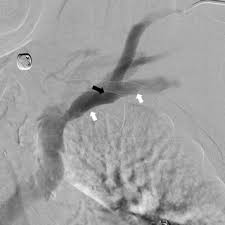
Fistulagram Albuquerque
However, here is a brief overview of Fistulagram Albuquerque:
A Fistulagram is a medical imaging procedure used to diagnose and treat problems with fistulas, which are abnormal connections between two body structures, such as blood vessels or organs. The procedure involves injecting a contrast material into the fistula and taking X-rays or other types of images to visualize the structure and assess any issues. In Albuquerque, this procedure is performed by trained medical professionals in a hospital or clinic setting.
The main benefit of Fistulagram is that it allows for a detailed, non-invasive evaluation of fistulas, which can help guide treatment and improve outcomes. The procedure is considered safe and typically has few risks or side effects.
Patients who undergo Fistulagram in Albuquerque can expect the following:
Preparation: Before the procedure, the patient may be instructed to fast for a period of time and to inform the medical team of any allergies or medical conditions.
Procedure: During the Fistulagram, the patient will lie on an X-ray table and the contrast material will be injected into the fistula. The patient may feel pressure or discomfort during the injection, but this should be brief. The X-rays or other images will be taken, and the contrast material will be monitored as it flows through the fistula.
Aftercare: After the Fistulagram, the patient may be instructed to drink plenty of fluids to help flush the contrast material from the body. Any discomfort or side effects should subside quickly.
Overall, Fistulagram is a valuable tool for diagnosing and treating fistulas and is widely available in Albuquerque. If you have been referred for this procedure, it is important to work closely with your healthcare provider to understand the benefits and risks and to ensure that you receive the best possible care.
Fistulagram Albuquerque How To Get It?
To get a Fistulagram in Albuquerque, you will typically need a referral from a healthcare provider such as a primary care physician, specialist, or surgeon. The following steps will help you obtain a Fistulagram:
Schedule an appointment with a healthcare provider: Your first step is to schedule an appointment with a healthcare provider who can evaluate your condition and determine if a Fistulagram is necessary.
Get a referral: If your healthcare provider determines that a Fistulagram is necessary, they will typically provide you with a referral to a radiologist or other specialist who performs the procedure.
Choose a facility: After you have a referral, you can choose a facility that offers Fistulagrams in Albuquerque. You may want to consider factors such as location, availability, and cost when making your choice.
Prepare for the procedure: Before your Fistulagram, you may be instructed to fast for a period of time and to inform the medical team of any allergies or medical conditions. You should also bring a list of any medications you are taking and any relevant medical records.
Attend the Fistulagram: On the day of the procedure, you will need to arrive at the facility and check in for your Fistulagram. You will then be taken to an exam room and the procedure will be performed by a trained medical professional.
After the Fistulagram, you may be instructed to drink plenty of fluids to help flush the contrast material from your body. Any discomfort or side effects should subside quickly.
It is important to work closely with your healthcare provider to understand the benefits and risks of Fistulagram and to ensure that you receive the best possible care. If you have any questions or concerns about the procedure, don’t hesitate to ask your healthcare provider for more information.
How Its Work Fistulagram Albuquerque?
A Fistulagram in Albuquerque works by injecting a contrast material into a fistula, an abnormal connection between two body structures, and using X-rays or other imaging techniques to visualize the structure and assess any issues. The following steps outline the process:
Preparation: Before the Fistulagram, the patient may be instructed to fast for a period of time and to inform the medical team of any allergies or medical conditions.
Injection: During the Fistulagram, the patient lies on an X-ray table and the contrast material is injected into the fistula. The patient may feel pressure or discomfort during the injection, but this should be brief.
Imaging: After the contrast material is injected, X-rays or other images are taken to visualize the fistula and assess its structure. The contrast material is monitored as it flows through the fistula, allowing the medical team to gather important information about the fistula’s function and any issues that may be present.
Interpretation: The images obtained during the Fistulagram are then interpreted by a radiologist or other specialist to assess the fistula’s structure and function. This information can be used to guide treatment and improve outcomes.
Aftercare: After the Fistulagram, the patient may be instructed to drink plenty of fluids to help flush the contrast material from the body. Any discomfort or side effects should subside quickly.
Overall, a Fistulagram in Albuquerque is a safe, non-invasive procedure that provides valuable information about fistulas. The procedure is performed by trained medical professionals in a hospital or clinic setting, and patients can typically expect to experience few risks or side effects. If you have been referred for a Fistulagram, it is important to work closely with your healthcare provider to understand the benefits and risks and to ensure that you receive the best possible care.

If you want to get amazing benefits by using this link
Fistulagram Albuquerque Conclusion:
In conclusion, a Fistulagram in Albuquerque is a valuable diagnostic tool used to assess the structure and function of fistulas. The procedure involves injecting a contrast material into a fistula and using X-rays or other imaging techniques to visualize the structure and assess any issues. The procedure is typically performed by trained medical professionals in a hospital or clinic setting, and patients can expect to experience few risks or side effects.
If you have been referred for a Fistulagram, it is important to work closely with your healthcare provider to understand the benefits and risks of the procedure and to ensure that you receive the best possible care. If you have any questions or concerns about the Fistulagram, don’t hesitate to ask your healthcare provider for more information. By obtaining a Fistulagram, you can gather valuable information about your fistula and work with your healthcare provider to develop an effective treatment plan.



